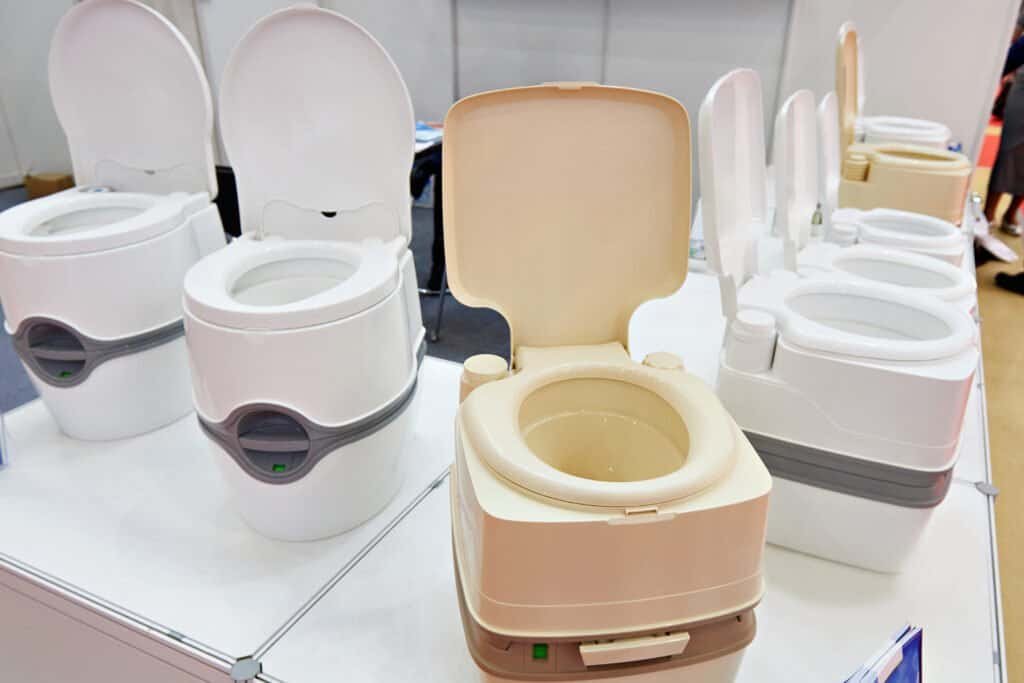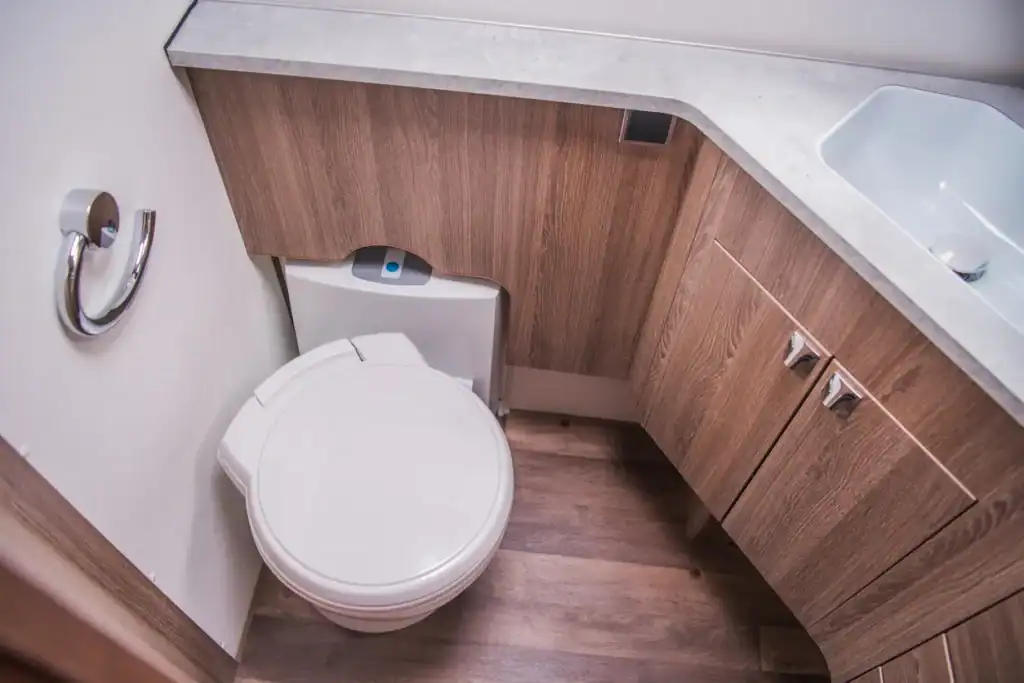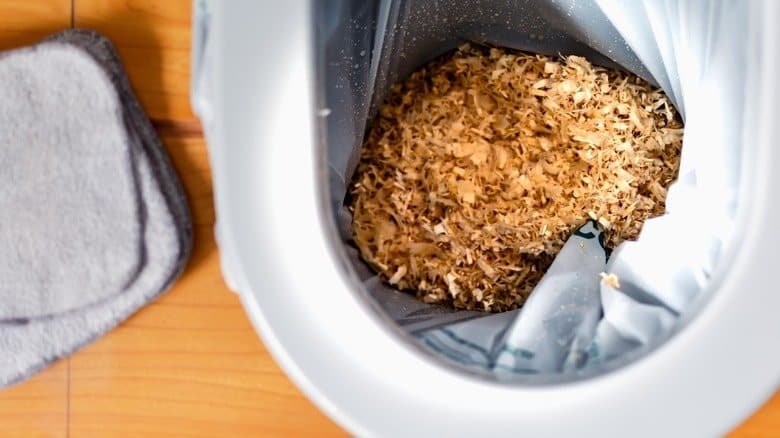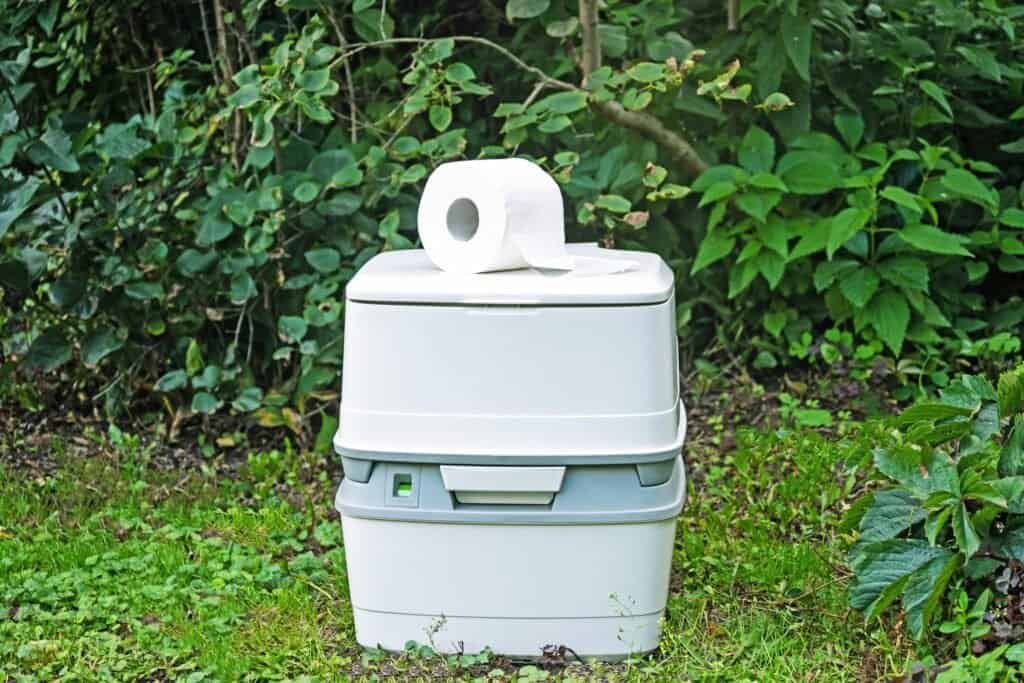A composting toilet turns human waste into nutrient-rich soil through a natural decomposition process. Unlike traditional toilets, it doesn’t require water for flushing. Instead, waste is mixed with a bulking agent, such as sawdust or peat moss, which helps to control odour and facilitates the composting process. The mixture then descends into a composting chamber where decomposition takes place.
In this chamber, microorganisms break down the waste, excess moisture evaporates, and with proper maintenance, the resulting compost is safe to handle. The nutrient-rich soil can fertilize non-edible plants, closing the loop in an eco-friendly waste management system.
Exploring the Inner Workings of a Composting Toilet
The composting toilet is a marvel of simplicity and sustainability. Through its unique design, it separates solid and liquid waste, allowing for more efficient decomposition and less odour.
A composting toilet typically consists of several key components that work together to manage waste. At the heart of the system is the solid container, where the waste is deposited. A toilet seat provides the user interface, resembling a conventional toilet. Below it, a urine separator diverter liquid waste, ensuring that it is collected separately from solid waste. This is crucial since too much moisture can hinder the composting process.
Waterless toilets like these often include a urine canister, which is periodically emptied, maintaining the efficiency of the composting system. Unlike a chemical toilet, which uses additives to break down waste, a composting toilet relies on natural processes, making it a more environmentally friendly option. The separation of urine and solids is key to reducing odours and accelerating the composting process.
The Biological Process of Waste Decomposition
The biological process in a composting toilet is akin to what happens in a backyard compost pile but on a smaller scale. The organic matter, including human waste, is broken down by bacteria, fungi, and other microorganisms into simpler compounds. This transformation is a natural occurrence that repurposes waste into a useful product.
Inside the composting chamber, oxygen plays a critical role as it fuels the microorganisms that are hard at work decomposing the waste. The result is a humus-like substance, similar to what gardeners and farmers value for its nutrient content and ability to improve soil structure.
Maintaining the Balance: Moisture and Aeration
For the composting process to thrive, the compost pile must maintain a delicate balance of moisture and aeration. Too much moisture can create anaerobic conditions that slow down the decomposition and lead to odours. Therefore, managing excess moisture is critical. Ventilation systems are often built into composting toilets to promote air circulation, which not only helps control moisture but also supplies the oxygen needed by aerobic bacteria.
Aeration can be facilitated manually by stirring the compost or through built-in mechanisms that ensure the material is adequately oxygenated. This balance is crucial for achieving a successful composting process that results in the desired decomposition without any unpleasant side effects.
The Role of Microorganisms in Composting Toilets
Microorganisms are the unseen heroes in a composting toilet system. Bacteria, fungi, and other tiny organisms work tirelessly to break down the organic matter, converting it into stable, sanitized compost. These microbes require a favourable environment to flourish, which includes the correct balance of carbon and nitrogen, adequate moisture, and sufficient oxygen.
This ecosystem within the composting toilet is a miniature version of what occurs in nature, where microorganisms break down organic materials on the forest floor. By creating the right conditions, composting toilets harness these natural processes to manage waste effectively and responsibly.

Practical Considerations for Composting Toilet Users
For those considering a composting toilet, practicality is key in ensuring smooth operation and integration into daily life.
Routine Maintenance and Cleaning Essentials
Cleaning a composting toilet involves a few simple but essential practices to ensure hygiene and functionality. Regularly removing deposits from the toilet bowl prevents buildup and maintains a clean surface. This is typically done with natural cleaning agents that won’t harm the composting ecosystem.
In addition to cleaning the bowl, monitoring the compost level and adding bulking agents as needed are part of routine maintenance. These steps are vital to keep the system working correctly and to provide a pleasant experience for all users.
Optimal Usage: What Can and Can’t Go In
Optimal usage of a composting toilet ensures its efficiency and longevity. Users should be mindful of what they introduce into the system. Human waste and toilet paper are acceptable, but non-biodegradable items and harsh chemicals can disrupt the composting process and damage the environment.
Education on proper usage is crucial for all members of the household. By adhering to guidelines, the composting toilet can function effectively, transforming waste into a beneficial product without causing harm or inconvenience.
Common misconceptions about composting toilets can lead to improper use. Toilet paper, for instance, is often assumed to be problematic. However, most types of toilet paper break down in the compost pile and do not pose a problem. It’s the non-biodegradable products, such as wipes and feminine hygiene products, that should be kept out.
Understanding what can safely be added to the compost pile is crucial for maintaining the system’s balance. Solid waste and toilet paper are typically fine, but users should avoid introducing materials that won’t decompose or could harm the composting process.

Navigating Unusual Situations: Vomiting and Medication Disposal
Unusual situations, such as vomiting or the disposal of medications, require special consideration in a composting toilet. Vomiting introduces an imbalance of organic material that can disrupt the composting process, while medications can potentially harm the beneficial microbes in the compost bin.
In such cases, it’s best to avoid depositing these substances into the composting system. Alternative disposal methods should be considered to maintain the health and efficiency of the composting process and ensure the production of safe, usable compost.
Emptying the Compost: How and Where to Responsibly Manage Waste
Responsible waste disposal is crucial when managing a composting toilet. The compost must be emptied when it has been sufficiently decomposed, typically a few times a year, depending on usage. Finished compost should be buried in a designated area or used on non-edible plants. It’s important to avoid using it in vegetable gardens due to potential health risks. Regulations vary, so users should consult local guidelines to ensure proper management of household waste.
Advantages and Suitability of Composting Toilets
Composting toilets offer an environmentally friendly alternative to traditional toilets, especially in areas where water is a scarce resource. They are aesthetically pleasing and can be designed to fit into any bathroom. Effective air circulation is integral to their function, reducing odors and accelerating composting. These systems are well-suited for remote locations, eco-conscious households, and places looking to reduce their ecological footprint.
1. Environmental Benefits: Water Conservation and Reduced Chemical Use
Composting toilets are a game-changer for water conservation, eliminating the need for flush toilets that consume vast amounts of this precious resource. By composting human waste, these toilets use little to no water, drastically reducing the household’s overall water consumption. This not only benefits the environment but also lowers utility bills, making it a smart choice for eco-minded individuals.
Additionally, composting toilets reduce the need for harmful chemicals used in traditional waste treatment. Unlike septic systems that often require additives, composting toilets rely on natural processes, therefore cutting down on chemical use and providing a greener waste management solution.
2. Financial Implications: Initial Costs vs. Long-Term Savings
While the initial costs of a self-contained composting toilet or a composting bin system might be higher than a traditional toilet seat, they offer significant long-term savings. The expenses associated with installing a septic system or connecting to a municipal sewer can be prohibitive, whereas compost toilets require no such investment. Furthermore, the recurring costs for water and sewage treatment are essentially eliminated.
A self-contained compost toilet also requires no plumbing, which can reduce construction costs in new homes. Over time, the compost produced can be used to enrich soil, providing additional savings for those who maintain gardens or landscaping. Considering these factors, the financial benefits of compost toilets are clear, particularly for those living off-grid or in areas without established waste management infrastructure.
3. Ideal Settings: Where Composting Toilets Thrive
Composting toilets are ideal in settings where conventional plumbing is not feasible, such as remote cabins, tiny homes, or off-grid living situations. They also excel in ecotourism destinations, where maintaining the natural landscape is paramount. Places that experience water scarcity can benefit immensely from the water-saving nature of compost toilets.
In urban environments, these eco-friendly options can contribute to sustainable living practices and community gardens. Educational facilities and parks are also suitable settings for compost toilets, where they can serve as practical demonstrations of sustainable waste management and resource conservation.

Making the Switch to a Composting Toilet
Switching to a composting toilet is a significant step towards sustainable living, offering a practical solution for waste management. By embracing this eco-friendly solution, households can reduce water usage and minimize their environmental impact.
Considering the Long-Term Benefits and Drawbacks
When weighing the long-term benefits of composting toilets, one must consider the holistic impact on waste management. The use of a urine separator can improve the composting process, while carbon-rich cover material helps absorb moisture. While initial costs may be high, composting toilets are an eco-friendly solution that can provide substantial savings over alternatives to traditional systems.
Is a Composting Toilet the Right Choice for You?
If you’re considering a composting toilet, think about your willingness to manage a natural process and whether you’re disconnected from the grid. Wood shavings play a key role in the composting process, and a remote or eco-conscious lifestyle is often more compatible with this type of toilet.
Summing Up the Composting Toilet Conversation
In the realm of waste management, composting toilet systems stand out by transforming waste into compost, a more environmentally friendly alternative to conventional sewage systems. By utilizing a separation of liquids and solids, these systems reduce water usage significantly. Solid and liquid waste are handled differently; solids combine with bulking materials like peat moss or coconut coir to aid in the decomposition process, while urine is diverted to mitigate urine scale and help speed up the drying process. Composting toilets are ideal for settings not connected to a sewer, such as tiny homes or national parks, offering a sustainable option that saves money on water and maintenance costs.
Embracing composting toilets is a profound step towards an eco-conscious lifestyle. Unlike a regular toilet, which relies on a plumbing system and centralized systems, composting toilets harness the power of microorganisms to turn human waste and food scraps into composted material. This process not only conserves water but also produces a nutrient-rich end product that can enrich soil without the sewage smell often associated with waste. The final result resembles fresh dirt, closing the loop on waste and returning it to the earth, thus contributing positively to the environment for generations to come.


